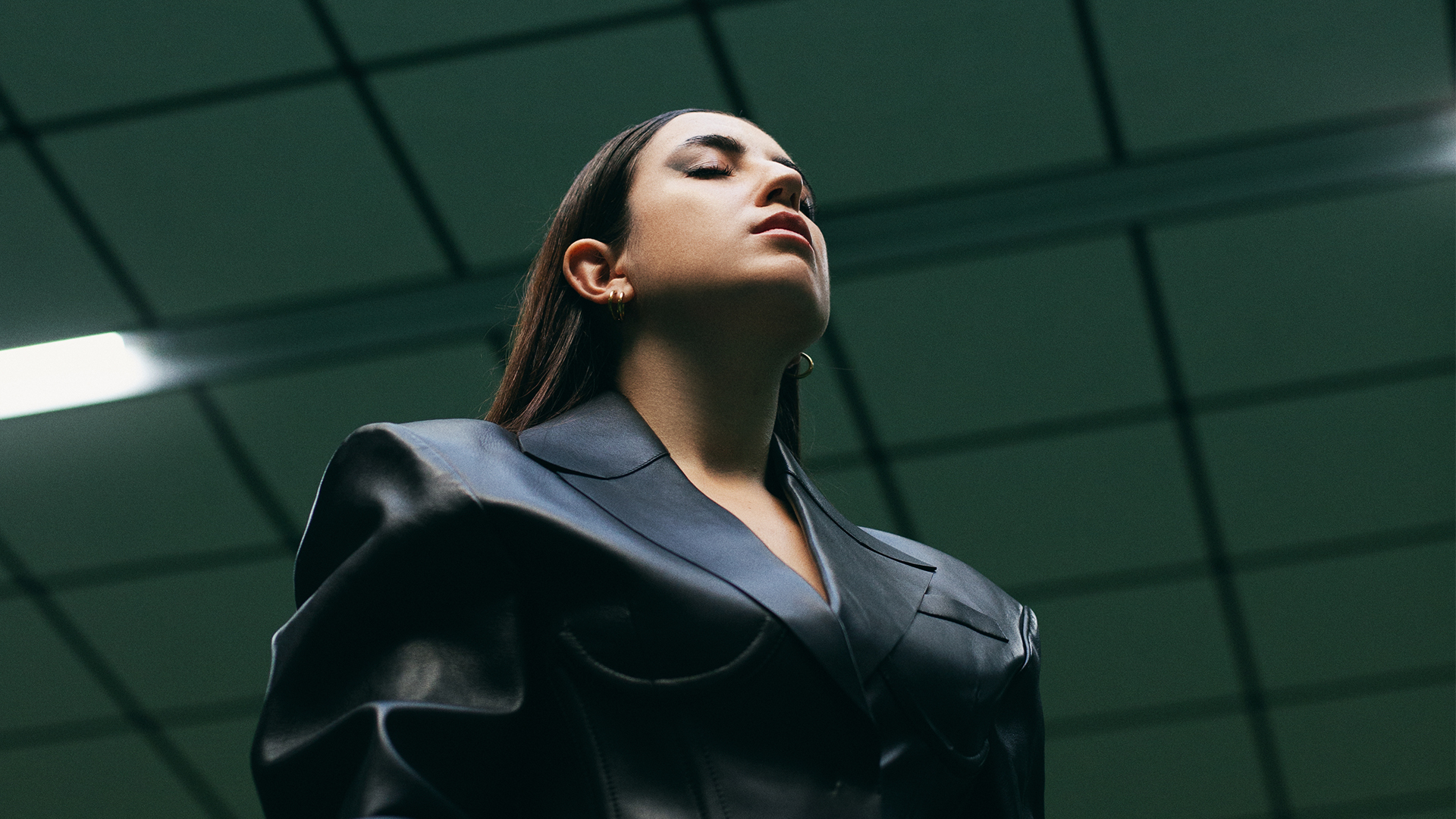
Adorning the rock faces of coastal Sardinia are carved-out chambers – relics of the bronze age said to be the dwellings of ancient nymphs. In Sardinian folklore, the Domus de Janas, or “House of the Fairies”, are enchanted caves where the sprites of the island would make golden jewellery during the day before venturing to meet humans at night. If the humans they encountered were honest and true, the Janas would bring them to their earthen houses and offer them jewels; if not, their fate was to be eternally cursed.
“Sardinians aren’t trusting of outsiders at the beginning, especially those visiting our land. But if they prove themselves as genuine, we give them our trust. Like the Janas, we’ll offer them everything we have.”
For Sardinian creative Chiara Floris, BLUEM is one of the treasures she offers the world. The experimental musical project expresses her deep connection to heritage, and the newly-released album nou is another addition to the lore of her land, embedding BLUEM in the annals of Sardinian mythology.
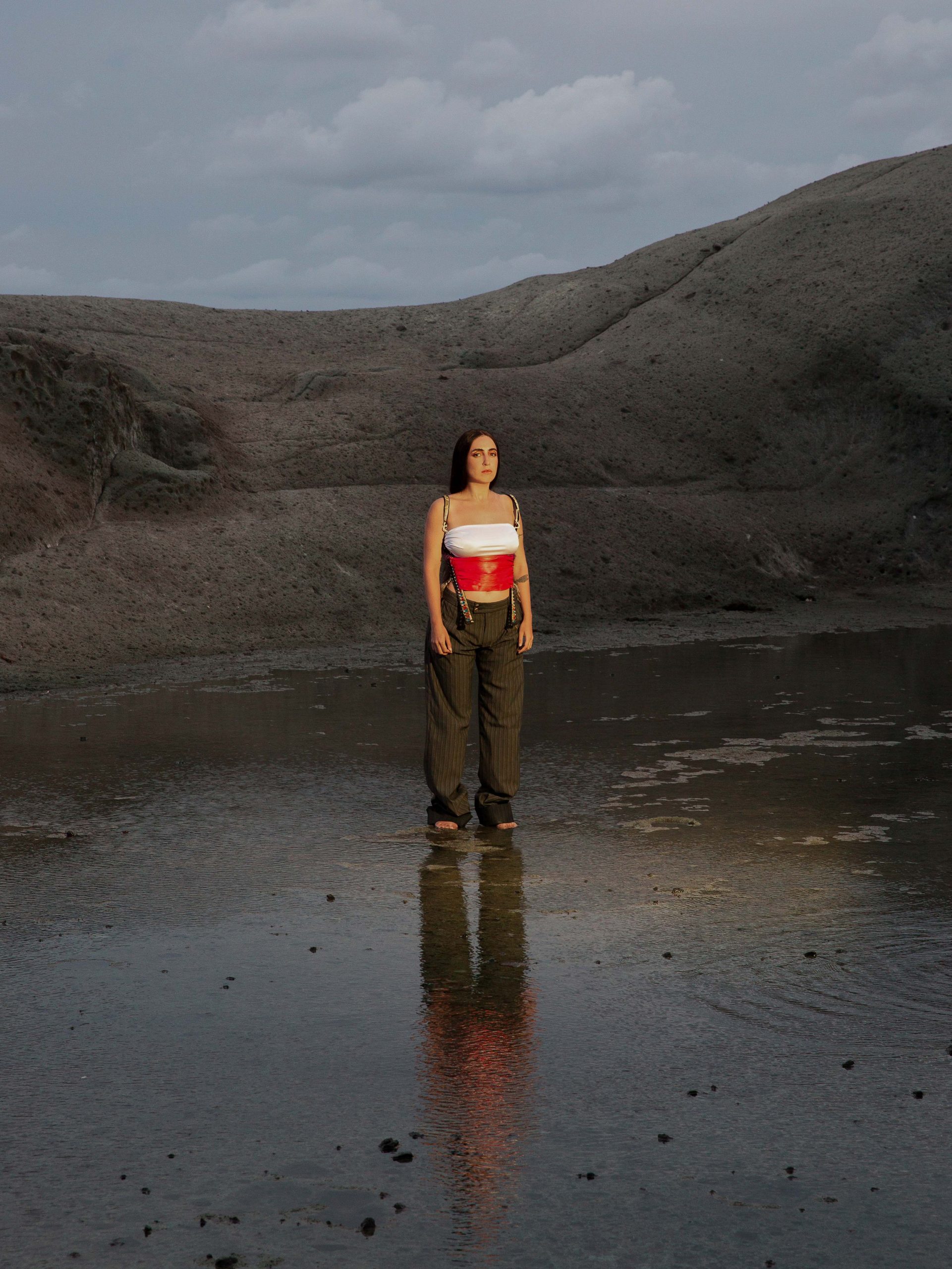
Photo: Valeria Cherchi
BLUEM began with 2018’s Picolina, a self-released EP sung in English. Then, after three years of experimenting with her sound, Chiara released NOTTE, an EP narrating an instinctive, primordial experience of love, sung entirely in her mother tongue. The aptly titled nou (meaning ‘new’) is a natural next step in BLUEM’s journey, entwining ancient storytelling with personal anecdotes, exploring life, death and love from a feminine perspective.
It’s rooted in her quest to survive the island’s unique cultures and traditions and her desire to offer the world a contemporary view of her homeland, beyond that of a picturesque Mediterranean holiday spot.
Another Sardinian fable tells the story of a young girl, Sula. Independent and headstrong, she refuses to be picked by one of the young boys on the island as a future wife. Instead, she flees to live alone in a cave, collecting caterpillars which transform into thousands of butterflies that consider her their mother. Sula is eventually chosen by one of the boys, and they marry, developing love and affection for each other over time. He leaves to battle enemies who want to seize the land, and upon returning injured, she sacrifices the life of her butterflies to save him.
“This tale is woven in the brief, final track of the album ‘Sula’ and nods to the sacrifices Sardinians are willing to make for each other and their art. “I’ve had opportunities come up that would have elevated my career, but I won’t do anything that doesn’t feel completely authentic. I work with people I connect with regardless of how well-known they are. In a way, compromise doesn’t even cross my mind.”
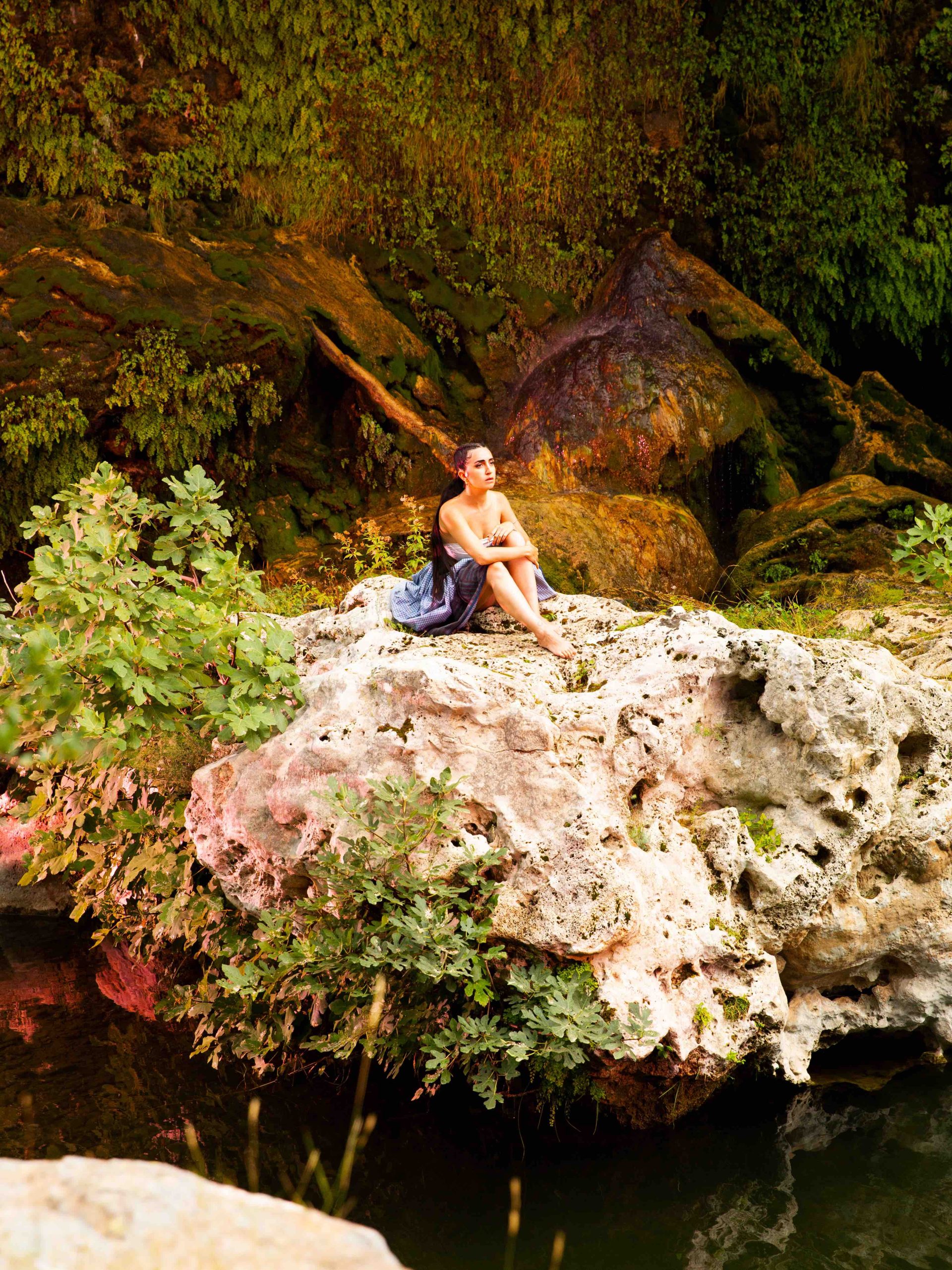
Photo: Valeria Cherchi
“Collaborating with Sardinian artists with whom I have a shared history and culture is easy,” Chiara tells me. “We all share the same purpose. We obviously do different things and have many reasons for doing them, but we all understand this shared intention. We want Sardinian culture to be known and appreciated in the modern world. We’re basically all brothers and sisters.”
Chiara consciously highlights the burgeoning but often overlooked creative scene in Sardinia, fuelling her recent collaboration with visual artist duo NARÈNTE. Together they released an audiovisual piece entitled OTHERWHERE, soundtracked by BLUEM’s track ‘Adele’, which samples the music of the eponymous Adele Madau, a Sardinian violinist and sound engineer.
Nou’s accompanying photographic imagery was shot on location by Sardinian artist Valeria Cherchi, with project artwork made by visionary Danish artist Ida Lissner, who drew inspiration from traditional Sardinian jewellery. The sonic fabric of the album is interlaced throughout with respectful homages to Sardinia’s own rich musical traditions.
Chiara notes that some Sardinians have been very protective and almost secretive about their culture to date, with little mainstream representation of modern Sardinian culture beyond textiles and visual arts. “Sardinians have always been a bit obsessed with keeping tradition exactly how it’s been for thousands of years. So if you touch it, you’re afraid that people won’t be happy with it, and you don’t want to upset the elders. But interpreting it in our own way and making new art is the only way to express our culture.”
On ‘angel’, the melody is evocative of traditional Sardinian folk singing whilst industrial, textural soundscapes mirror the rhythms of city life. ‘Moonlight’ explores the legend of the Janas while the penultimate ‘piano song’ features flourishes of jungle drums and a slow, reggaeton hook, all interpreted through her own unique lens.
“I was listening to a lot of drum and bass because it’s big in the UK, but when it came to the point of writing the lyrics, I couldn’t bring myself to write things like, ‘Hey, let’s go party!’. It’s really about existential crisis. I tend to think a lot about the meaning of life. I wonder what we are and if we’ve been here before. It’s very reflective and very personal.”
BLUEM’s first album NOTTE was a concept album made in one week, born from the frustration of working a thankless job with no time to pursue her creative endeavours. “I was like, ‘What am I doing? I’m working eight hours in a cafe; I came [to London] to study music and to make music, and I’m not doing that’. I needed to express myself but was so consumed by work and a toxic relationship. I just decided to take a week off to make music, and that’s what I did. I wrote a new song every day that week.”
“A lot of people ended up attributing the sound and production of NOTTE to my friend who helped me with it, because he’s a guy. I don’t think they thought a female producer could do it.
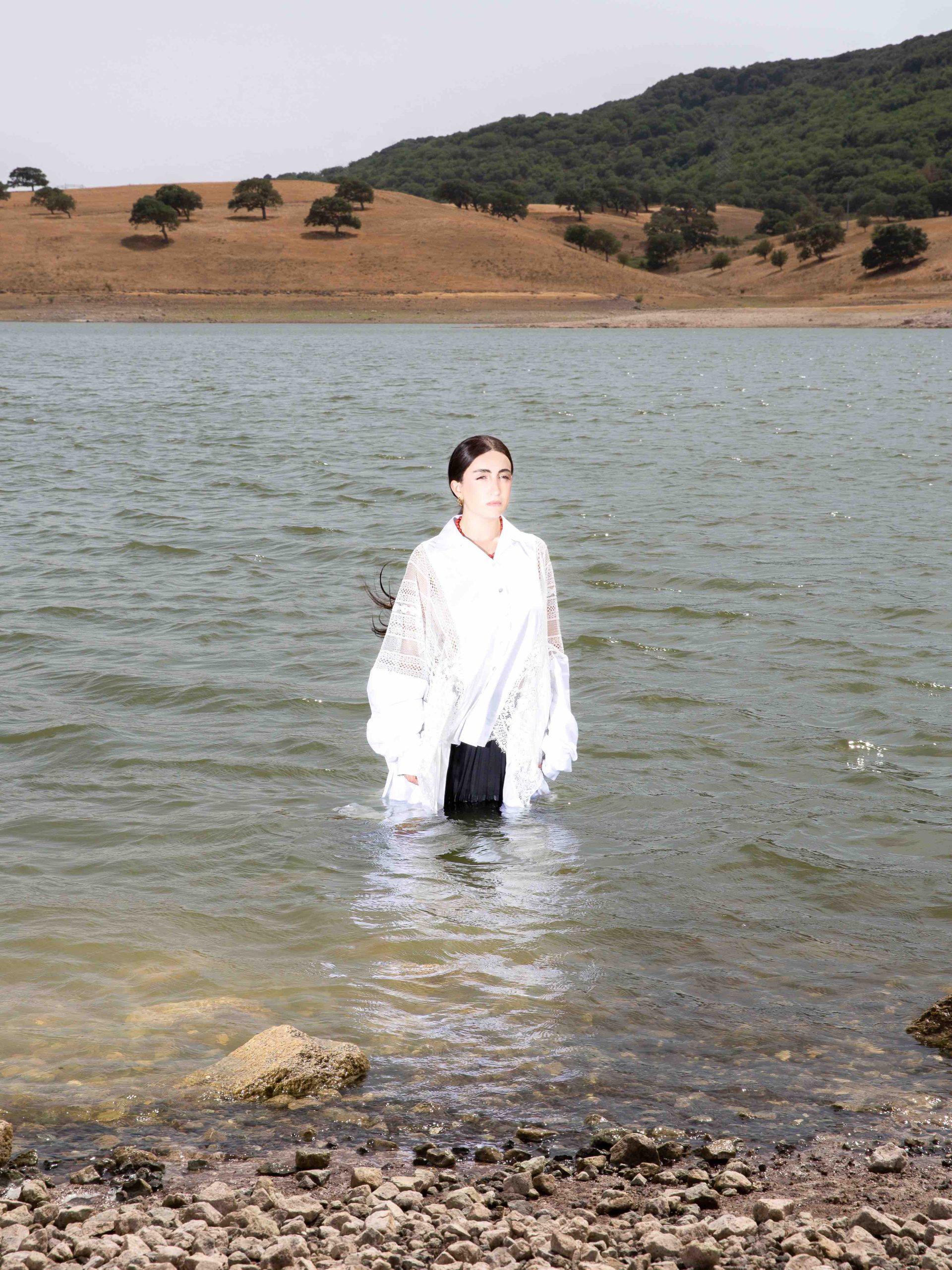
Photo: Valeria Cherchi
For a long time, I was frustrated that people thought I couldn’t do it on my own. So when I wanted to create another project, I went to Sardinia for two weeks and isolated myself in a village by the beach where I spent the summers growing up.
“My intention was to do everything completely by myself, so nobody could say I didn’t. But after I started, I realised how stupid that was. Evolving and doing something new meant I had to be open to collaboration. I was limiting myself because of the fear of being underestimated; it was absurd.”
This sense of self-awareness and discovery is present in BLUEM and across Chiara’s art in general; she channels power, sensitivity, fierceness and vulnerability in equal parts, carving out her place as a woman in an often challenging creative landscape. Other outlets, such as pole dancing and tarot reading, are part of the exploration of her own femininity.
“Pole dancing really changed my perception of my body; I’ve connected with my sexuality. It’s helped me a lot mentally because it’s a really tough sport; it’s really hard on the body but also on the mind.”
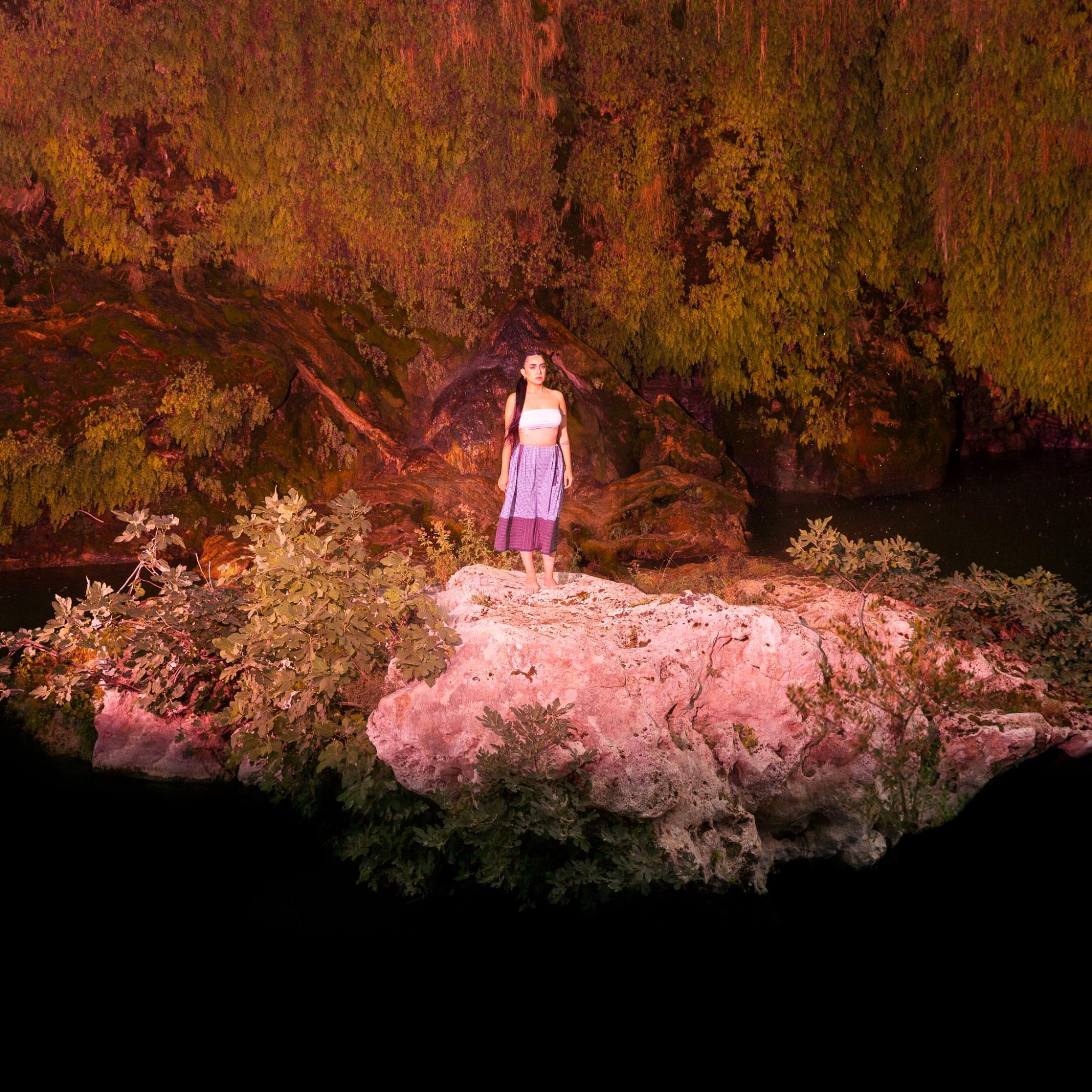
nou is out now.
“To me, it’s about overcoming fear because you’ll find yourself in unnatural positions, and your brain is telling you to be afraid, but you overcome that fear with every move. As for tarot, it’s natural that I gravitated towards it because we Sardinians have a connection to ritualistic, esoteric stuff. It’s a fascinating form of therapy for me based on energy, tradition and psychology.”
“It’s interesting to see how sexism manifests through different forms of art. From the musical production perspective, I’m doing a job that’s considered a man’s job, and people struggle to accept it. Then on the dancing side, you have people convinced that is something women do just to be sexy for men. A lot of women read tarot, which is why I think some people don’t take it seriously. Whether it’s dancing or making music or anything else, that prejudice is there, and it’s clear.”
Listening to Chiara wax lyrical about Sardinian tradition as well as recount her own experiences contextualises nou as a striking work of tenderness and movement. The album is a portrait of an artist in bloom; its quiet beauty and power cement her not just as a Sardinian musician but as a global artist with a vision that transcends language, arresting and moving no matter where you’re listening from.



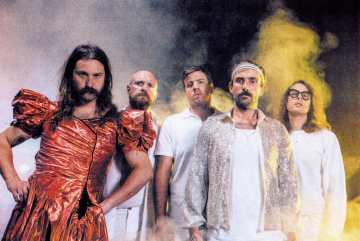

1 Comment
thanks for reviewing this artist. I didn’t know her. I’m listening to her album right now and I’m falling in love with it <3 Beautiful interview!